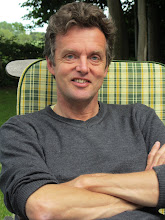PILGRIMAGE
For the past few years my wife has gone on a "pilgrims' walk" at Whitsun. Over three days, they wander over nice parts of Fünen, the island in the middle of Denmark where we live, visiting and staying in old churches and ending up on the Monday evening with a service in Odense Cathedral. The trip apparently attracts all sorts; very religious, mildly religious, agnostic, even some professed heathens.
Because the Haj, the pilgrimage to Mecca that every Muslim is supposed to undertake at least once in their lives, is one of the five pillars of Islam, pilgrimage continues to thrive in the Muslim world. It is also big in Hinduism. Yet active pilgrimage, as opposed to tourism to places that have a religious history (eg Rome), is no longer a required part of Christianity. Pilgrims were common sights on the roads in mediaeval Europe, with secular leaders to the fore; but like modern-day hitchhikers, they seem to have disappeared.
By chance, my son was in Galicia at Whitsun, playing for the Great Britain national handball team. They visited a number of places, but failed to go to Santiago de Compostela, the shrine of St. James, and perhaps the second most important mediaeval pilgrimage site after Rome itself. That omission seemed to sum up the way the western world has changed.
Walter Blotscher
Tuesday, 25 May 2010
Subscribe to:
Post Comments (Atom)

Had he had the chance to go to Santiago, he would have found many pilgrims there. Every year people from all over the world walk parts or all of the Santiago de Compostella road and many of them are very serious about the walk as well as the religious aspects of it. One day I hope to be one of them.
ReplyDeleteI think that pilgrimage is something you do in later life, once hopes and dreams are over. Then both death and God are close. I might be very close to pilgrimage time.
ReplyDelete